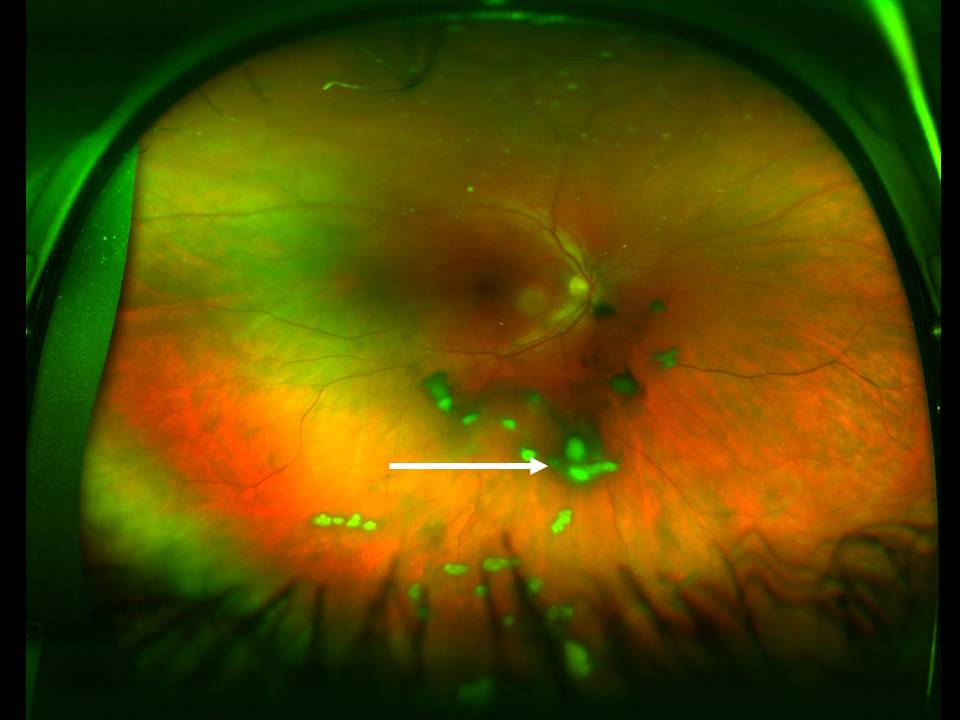Pars planitis is an inflammation of a specific part of the eye called the pars plana, located in the most peripheral part of the retina. With very typical clinical signs, it is common to suffer from it in childhood. About the prognosis and treatment options we spoke with Dr. Alfredo Adan, specialist in uveitis at visiõnclinic.
What is pars planitis?
Pars planitis is a particular form of uveitis that is characterized by localized inflammation in an anatomical structure called pars plana. The pars plana is located in the most peripheral part of the retina. In pars planitis, the gel inside the eyeball, called the vitreous, is also inflamed.
This inflammation causes one of the most frequent signs of the disease: the presence of floating bodies in the vitreous due to the accumulation of inflammatory cells (in the image below). Sometimes these floating bodies can become very dense, producing great opacity and even causing significant loss of vision.

At what age is pars planitis usually diagnosed?
Pars planitis is more frequent in childhood, with some peculiarities linked to the pediatric age. In boys and girls, the pictures that we usually find in consultation tend to be more evolved: “since the eye is not red, it also goes unnoticed by parents and, in most cases, it is detected in a routine ophthalmological examination when the inflammation is very evolved”.

Dr. Alfredo Adan
Pars planitis is often associated with an incorrect functional development of vision, which is called lazy eye or amblyopia. Consequently, it is key to make a correct diagnosis of the ocular disorder and early treatment.
What are the causes of this visual disturbance?
A key point that is also unknown in other uveitis is the mechanism that produces it. It is possible that the cause is linked to an autoimmune basis, but without association with any disease or infection outside the eye. Consequently, extensive laboratory and radiological studies are not recommended. It is a purely ocular uveitis. This point is of great importance to avoid unnecessary tests and excess concern for families.
In advanced cases of pars planitis, it can be accompanied by inflammation in the most central part of the retina in the form of macular edema. More rarely, it can cause intraocular hemorrhage or retinal detachment.
How can pars planitis in childhood be treated?
In a first stage, the treatment is based on the administration of corticosteroids. In children, it is preferable not to administer them by the general route (orally) due to the effects on growth retardation that they produce. For this reason, it is recommended to inject corticosteroids through infiltrations around the eyeball, triamcinolone being the most frequently used.
Slow-release dexamethasone intravitreal implants can also be injected. In these cases, intraocular pressure should be especially controlled.
If there is no adequate response to this treatment, surgery may be chosen. The operation is called vitrectomy and consists of removing the vitreous that contains the inflammatory cells resulting from inflammation. This procedure can achieve the healing of the patient. This technique is also used in cases of vitreous hemorrhage or retinal detachment that can be caused by pars planitis itself.
Other treatment options are immunosuppressants or biologics.
Is it a disease with a good prognosis?
In general, the disease has a good prognosis: a third of the cases do not require any treatment and are usually self-limiting. Cases treated early can also progress well and the disease tends to become inactivated.
Can pars planitis occur in adulthood?
In adulthood, the inflammatory disease is called intermediate uveitis, since the pars plana is usually not inflamed but the most peripheral retina is. Compared with pars planitis, it has a better visual prognosis, probably because the cases are less developed. However, there may be a higher incidence of macular edema.



